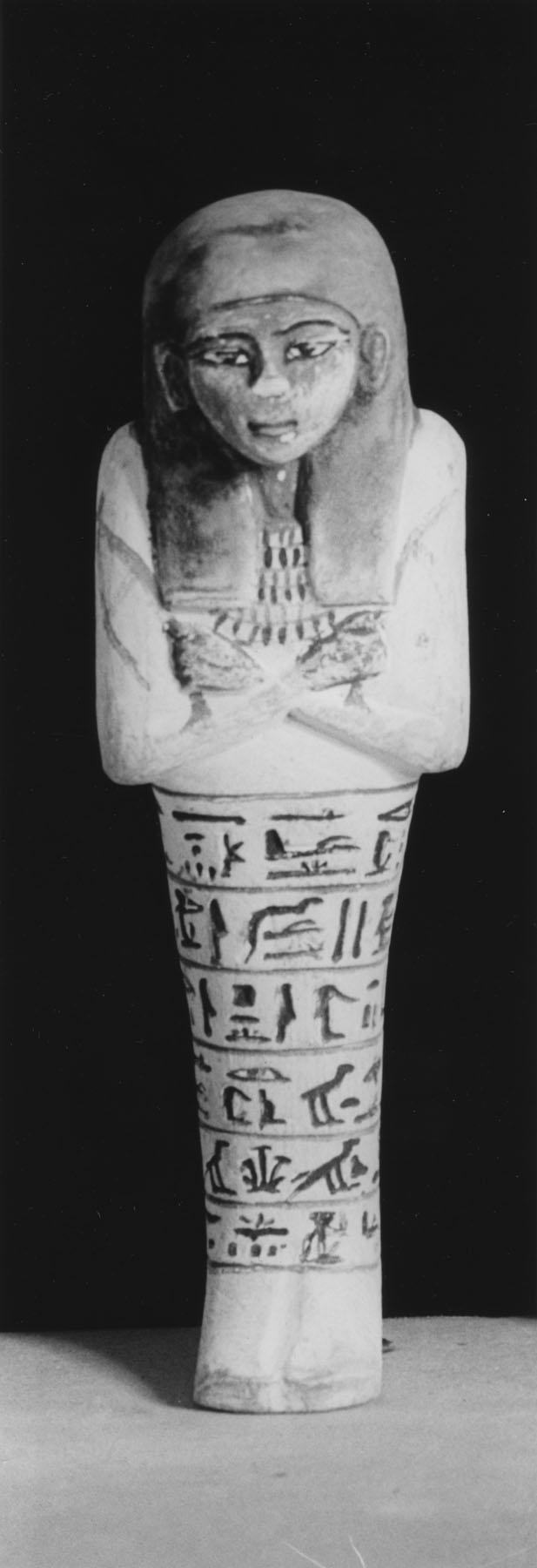Ushabti Figure of Ka-ha
(Ancient Egypt and Nubia )
Ushabti (meaning "answerers"), also called "shawabti," which resemble miniature mummies, were made mostly from inexpensive materials such as wood or Egyptian faience. These funerary statuettes represent the individual whom they accompanied into the tomb and the afterlife. If a god called on the deceased to perform labor, this servant substitute, magically invoked by a traditional spell, would answer and do the work on behalf of the tomb's owner.
This ushabti served as a proxy for the "chief painter Ka-ha," who worked at Deir el-Medina during the reign of Ramesses III (1185-1153).
Inscription
Provenance
Provenance (from the French provenir, 'to come from/forth') is the chronology of the ownership, custody, or location of a historical object. Learn more about provenance at the Walters.
Abemayor, Cairo, [date and mode of acquisition unknown]; Henry Walters, Baltimore, 1930, by purchase; Walters Art Musueum, 1931, by bequest.
Geographies
Egypt, Western Thebes (Deir el-Medina) (Place of Origin)
Measurements
H: 7 1/8 × W: 2 3/16 × D: 1 3/4 in. (18.1 × 5.6 × 4.4 cm)
Credit Line
Acquired by Henry Walters, 1930
Location in Museum
Accession Number
In libraries, galleries, museums, and archives, an accession number is a unique identifier assigned to each object in the collection.
In libraries, galleries, museums, and archives, an accession number is a unique identifier assigned to each object in the collection.
22.187


